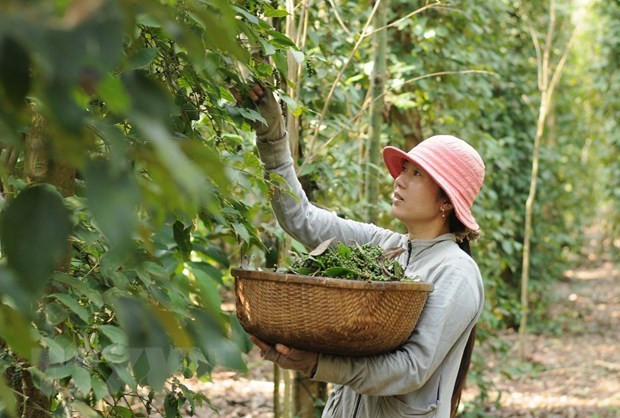
Since its debut in 2006, trade through the exchange has been steadily growing with MXV reporting a 36% growth year-on-year in 2022.
The exchange has successfully connected to many of the world's largest commodity markets including the Chicago Mercantile Exchange (CME Group), the London Metal Exchange (LME), the Intercontinental Exchange (ICE), the Singapore Exchange (SGX), the Osaka Exchange (OSE), and the Bursa Malaysia Derivatives Exchange (BMD), said Tran Duy Dong, head of the domestic market department under the Ministry of Industry and Trade, at a workshop held in Hanoi on May 17.
"MXV's success is a clear indication of Vietnam's greater role in global trade. Large international exchanges not only view Vietnam as a market with great potential, but they are also willing to collaborate with us to turn MXV into a leading exchange in the region," he said.
At the workshop, trade experts from CME said global trade will likely remain unpredictable for the rest of 2023. For example, global oil prices reached a peak of 83.38 USD per barrel in April, only to hit a new low of 63.57 USD a month later on May 4.
Global macroeconomics still holds too many variables, primarily related to the US' economic performance and China's recovery. While there have been more downs than ups in the global market so far this year, there are still reasons to be optimistic about the resilience of the economy in the medium and long term, said Erik Norland, Executive Director and Senior Economist at CME Group.
The MXV Index, which represents 31 traded commodities in Vietnam, has decreased by more than 10% compared to the end of 2022. Among them, agriculture and energy experienced the most drastic price drops by 13% and 17%, respectively.
Experts said prices likely won't stabilise until global macroeconomic conditions improve.
In recent months, however, raw material prices have been on the rise, with many being Vietnam's strong products including coffee, rubber and black pepper.
Meanwhile, pressure on the country's animal feed industry has been lessened as global prices for input materials went down significantly. Imported corn prices at ports such as Cai Lan and Cai Mep have dropped below 280 USD per tonne, compared to the price of over 330 USD per tonne earlier this year, which translated into lower prices for animal feed in the domestic market.
A report by the General Department of Vietnam Customs showed Vietnam imported 2.81 million tonnes of corn in the first four months of the year, a 9.3% increase from the same period last year. Imports of wheat and soybeans also increased by 6.7% and 1.6%, respectively.
However, experts have warned of a reverse trend during the second half of 2023 and one that businesses must take measures to mitigate its damage.
Dang Viet Hung, director-general of MXV, urged Vietnamese businesses to take full advantage of the current favourable conditions while laying the groundwork to prepare for the second half of the year.
By the end of 2022, Vietnam remained the largest exporter of Robusta coffee, the third-largest exporter of rubber, the sixth-largest importer of corn, and the third-largest importer of soybean worldwide./. VNS